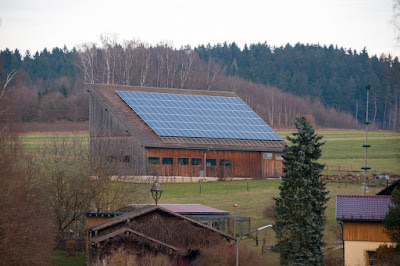Online Solar Power Resources
Want to
learn more about how solar energy works? The Union of
Concerned Scientists has compiled a wonderful overview of the sun’s power to
harness energy in an article called, “The
Solar Resource.” It offers a nice introduction to photovoltaic (PV) panels
and their potential kilowatt-hours per year for a typical US household.
The New York State Energy Research and
Development Authority offers a series of nice links to resources about solar for a home as part of its
community solar awareness and empowerment programs. The site answers a series
of frequently asked questions about residential
solar. How does solar energy work? What are the benefits of solar? Am I ready
for solar? How do I get started with solar? How do I pay for solar?
Wondering
what the total solar energy picture looks like right now in the US? The Solar Energy Industry Association constantly updates its “Solar
Market Insight” to describe current Gigawatts (GW) of total
installed capacity and how many US homes that can currently power.
The US Energy Department’s Office of Renewable
Energy and Energy Efficiency have “Solar Mapping Resources” offers a number of
tools to forecast the US solar future.
Satellite maps, irradiance data, and real-time bids from installers have been
combined to assist customers in understanding the potential costs and benefits
of solar with just the click of a button.
The National Renewable Energy Laboratory
(NREL) provides daily total solar
averaged over surface cells in both longitude and latitude in their “US Solar
Maps.” There are also maps that show solar photovoltaic and
concentrating solar power resource potential for the US.
Carnegie Mellon University has compiled a
series of links to “Solar Energy Resources” that provide
background information, data, and responses to frequently asked questions in global energy, economics, and market
trends.
Like video explanations? Then you’ll love
Richard Kemp’s TedEd Talk titled, “How do solar panels work?” The narrative is a concise series of explanations that
start with how solar cells work and move into physical and logistical
challenges of mass solar adoption.
And, if you really a visual learner, then this
Discovery Channel Documentary in collaboration with National Geographic will be
a big help. Called “Renewable Energy Science,” the 1-hour show
talks about how our once-favored energy source, fossil fuels, is no longer a
realistic option due to its warming effect on the atmosphere. The explanations
of various renewable energy options,
while delivered with poignant music and a dramatic narrator voiceover, do
provide good information for newcomers and for those who need a refresher.
To know more, visit at: https://www.costofsolar.com/
To know more, visit at: https://www.costofsolar.com/


Great post.
ReplyDeleteI love this post Thanks for sharing! Keep Writing!
Solar cost Thailand